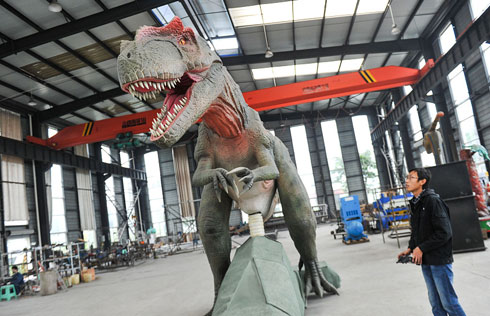

The report warned that China's leaders have just a short window of opportunity to make policy decisions. Inertia will mean worsening living conditions - more importantly, it will challenge the sustainability of social and economic development.
"China's fast-aging population, as well as the 262-million migrant population, mean there's no time to lose," said Pan Jiahua, director of the Institute of Urban and Environmental Studies and a chief editor of the report.
The report drew up three different scenarios for urbanization.
In the speed scenario, China's urban population will reach 71 percent of its total population by 2030, and GDP generated by cities could amount to 110 trillion yuan ($17.9 trillion). But this speed also comes at the expense of per capita living space and water consumption, as well the supply of subsidized housing.
In the "moderate pace" and "moving more slowly" scenarios, fewer people would live in cities by 2030 and cities' total GDP would be smaller. But people will have larger and more affordable homes and enjoy more drinkable water.
The latter two scenarios would cost more. For example, in the speed scenario, it takes about 80,000 yuan to transform a migrant worker into full urban resident. In the "moving more slowly" scenario however, it would take about 150,000 yuan.
Given the current institutional environment, will local officials be willing to spend more to turn migrant workers into full citizens, instead of relentlessly pursuing GDP growth?
The report suggested reform of the incentives and performance evaluations of public officials. There should be a more open and transparent decision-making process and more public involvement, it said. Also, local governments need more financing options to reduce their dependence on land transaction revenues.
 4th World Internet Conference concludes
4th World Internet Conference concludes
 Starbucks Reserve Roastery set to open in Shanghai
Starbucks Reserve Roastery set to open in Shanghai
 Smile to get discounts in Tmall's unmanned supermart
Smile to get discounts in Tmall's unmanned supermart
 Top 10 richest Chinese women in 2017
Top 10 richest Chinese women in 2017
 World leading internet sci-tech achievements released in Wuzhen
World leading internet sci-tech achievements released in Wuzhen
 Top tech CEOs take to the stage as Wuzhen Summit opens
Top tech CEOs take to the stage as Wuzhen Summit opens
 Major topics at 4th World Internet Conference
Major topics at 4th World Internet Conference
 'Made in China' dinosaurs amuse the world
'Made in China' dinosaurs amuse the world